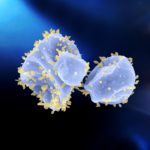Lien vers Pubmed [PMID] – 36864746
Lien DOI – 10.1093/nar/gkad125
Nucleic Acids Res 2023 Apr; 51(7): 3270-3287
Many prokaryotic viruses are temperate and their reactivation is tightly regulated. However, except for a few bacterial model systems, the regulatory circuits underlying the exit from lysogeny are poorly understood, especially in archaea. Here, we report a three-gene module which regulates the switch between lysogeny and replicative cycle in a haloarchaeal virus SNJ2 (family Pleolipoviridae). The SNJ2 orf4 encodes a winged helix-turn-helix DNA binding protein which maintains lysogeny through repressing the expression of the viral integrase gene intSNJ2. To switch to the induced state, two other SNJ2-encoded proteins, Orf7 and Orf8, are required. Orf8 is a homolog of cellular AAA+ ATPase Orc1/Cdc6, which is activated upon mitomycin C-induced DNA damage, possibly through posttranslational modification. Activated Orf8 initiates the expression of Orf7 which, in turn, antagonizes the function of Orf4, leading to the transcription of intSNJ2, thereby switching SNJ2 to the induced state. Comparative genomics analysis revealed that the SNJ2-like Orc1/Cdc6-centered three-gene module is common in haloarchaeal genomes, always present in the context of integrated proviruses. Collectively, our results uncover the first DNA damage signaling pathway encoded by a temperate archaeal virus and reveal an unexpected role of the widely distributed virus-encoded Orc1/Cdc6 homologs.


